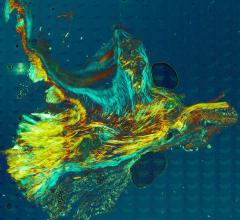
Photo: Göteborgs universitet
June 12, 2023 — An effective treatment for most stroke victims — even those who, today, are unable to gain access to care within the first few hours. This is the goal of an experimental method that has been tested with great success in an international study headed by the University of Gothenburg.
The work now published in the Journal of Clinical Investigation is a multicenter study in which researchers at the Universities of Gothenburg and Cologne implemented parallel testing of an experimental stroke treatment on mice. The study was conducted in collaboration with researchers at the Czech Academy of Sciences.
By giving mice a molecule, the complement peptide C3a, in nasal drops, the scientists saw them recover motor function faster and better after stroke compared with mice that had received nasal drops with placebo. These results confirm and extend a previous study at the University of Gothenburg and the current study design further strengthens their credibility.
“We see the same positive effects in experiments done in Sweden and in Germany, which makes the results much more robust,” says Marcela Pekna, Professor of Neuroimmunology at Sahlgrenska Academy, University of Gothenburg, who led the study.
No Racing Against Time
One crucial point is that the treatment was not initiated until seven days after the stroke. In a conceivable future, most stroke patients could thus be included — even those who do not reach hospital in time or who, for other reasons, are not helped by clot-dissolving drugs (thrombolysis) or mechanical clot removal (thrombectomy).
“With this method, there’s no need to race against the clock. If the treatment is used in clinical practice, all stroke patients could receive it, even those who arrive at the hospital too late for thrombolysis or thrombectomy. Those who have remaining disability after the clot is removed could improve with this treatment too,” Pekna says.
The study demonstrates not only very distinct positive effects, but also identifies the underlying cellular and molecular processes in the brain. Magnetic resonance imaging (MRI) showed that the treatment with C3a peptide increased the formation of new connections among nerve cells in the mouse brains.
Mechanisms Clarified
Milos Pekny, Professor at the Department of Clinical Neuroscience at Sahlgrenska Academy, University of Gothenburg, participated in the study.
“Our results show,” he says, “that the C3a peptide affects the function of astrocytes — that is, cells that control many of the nerve cells' functions in both the healthy and the diseased brain — and which signals astrocytes send to nerve cells.”
Despite advances in emergency care, the most common form of stroke, ischemic stroke, is still a major cause of long-term disability, including impaired speech and mobility. The researchers emphasize that stroke treatment is not solely a matter of prompt interventions in the first hours after symptom onset.
“There is great potential for substantial improvement even at a later stage. Since the molecule was administered in nasal drops, the treatment could be given at home by relatives or the patients themselves,” Pekny says.
Timing is also of importance when it comes to the C3a peptide treatment. If the molecule is given too soon, it might increase the amount of inflammatory cells in the brain. The study also shows that the positive outcomes in experimental animals persist long after the treatment is discontinued.
“The good effect remains,” Pekna says, “and that is important. It means that this is real. And we know more about how the C3a peptide works. Our ambition is to develop the method to make it usable in clinical practice, but to get there, and especially to be able to carry out the necessary clinical trials, we need to team up with a partner in the pharmaceutical industry,” she concludes.
For more information: https://www.gu.se/en


 April 01, 2025
April 01, 2025 








